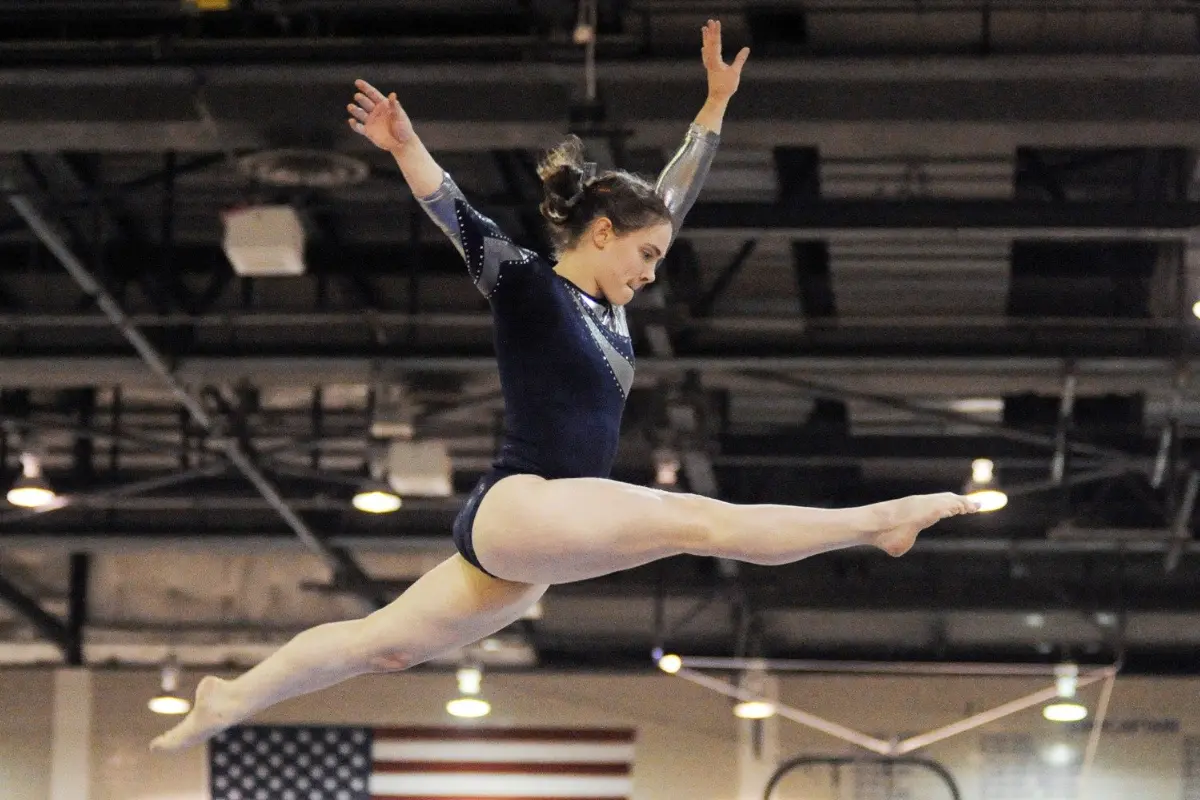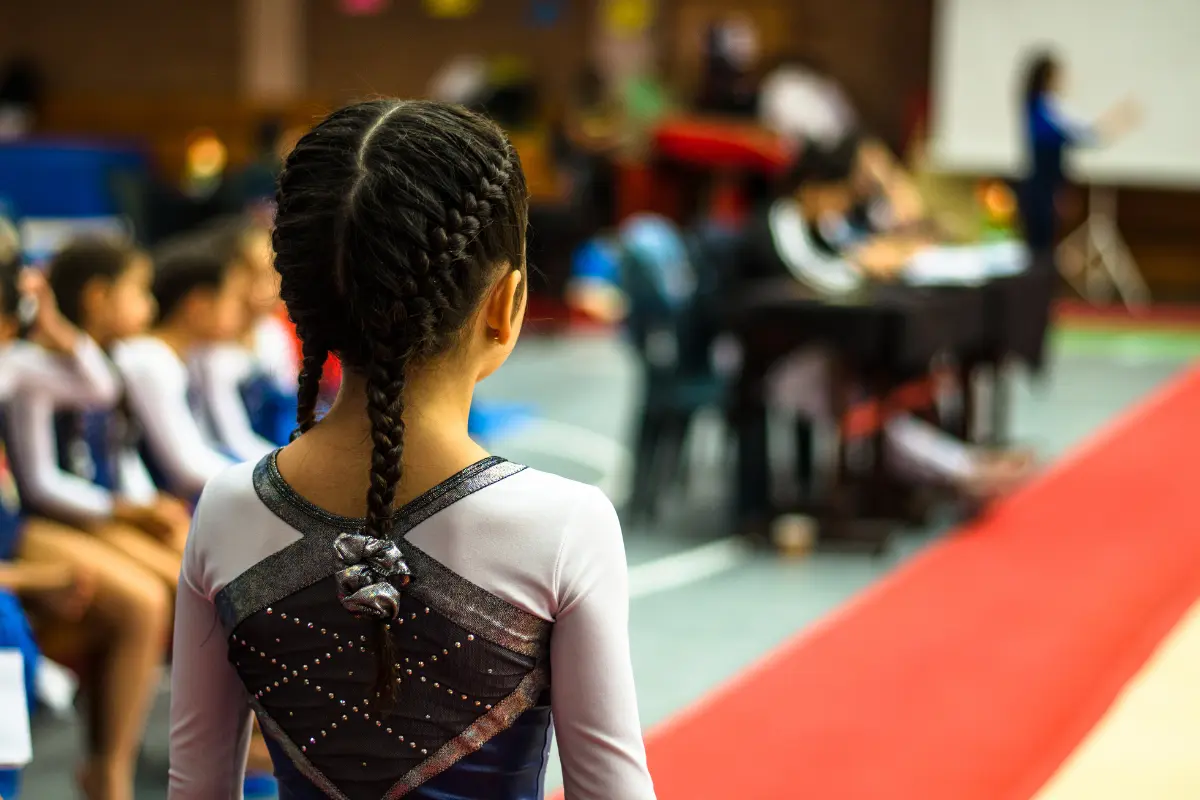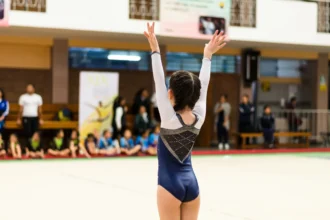In the world of gymnastics, a gymnast’s ability to create a new, challenging skill that pushes the limits of what’s possible is a remarkable achievement. Some gymnasts, like Simone Biles, have earned the honor of having moves named after them, marking their place in gymnastics history. But how exactly does this happen?
Let’s take a closer look.
1. Innovation: Creating Something New
It all starts with innovation. For a gymnast to have a move named after them, they need to perform something that’s never been done before—something new and difficult. This could mean combining elements in a way no one else has, creating a skill that requires a high level of strength, flexibility, and precision. It might also involve finding a way to execute an existing skill differently, making it more difficult or creative.
For example, a gymnast could introduce:
- New combinations of flips, twists, or jumps that hadn’t been seen before.
- New techniques that change the way a skill is performed, like adding an extra twist to a routine or a different body position.
- A more difficult version of an existing skill—such as adding more flips or twists to a move that was previously done with fewer.
Take Simone Biles’ triple-double on floor (a double backflip with three twists). It was not only groundbreaking for its difficulty but also for how she executed it—something no one had ever done before with such precision.
2. Performance in Major Competitions
But even the most innovative skill isn’t enough if it isn’t performed in competition. After a gymnast creates a new move, they have to execute it successfully in a major event. This is the next step in earning a move named after them.
Gymnasts typically showcase their new skills at major competitions like:
- World Championships
- The Olympics
- Continental Championships
- International Gymnastics Events
To get a move officially recognized, it’s not enough just to try it out; it has to be done well. This means the gymnast needs to land the skill cleanly, showing full control and perfect form. The move must be done flawlessly, as the judges will be looking for precision. If a gymnast doesn’t land the move or it’s not executed correctly, the skill might not be accepted.
Simone Biles’ famous Biles vault, for example, wasn’t just innovative; it was performed flawlessly in competition, which helped cement its place in gymnastics history.
3. Evaluation by the International Gymnastics Federation (FIG)
Once the move is performed at a major competition, it’s time for the International Gymnastics Federation (FIG) to step in. The FIG is the governing body for international gymnastics, and it’s responsible for officially recognizing and documenting new skills.
When a gymnast performs a new move, it gets reviewed by a panel of experts—judges, coaches, and other professionals in the field. They evaluate:
- Innovation: Is this move truly new and different from what’s already in the sport?
- Difficulty: How challenging is the move? Does it push the boundaries of what’s possible in gymnastics?
- Safety: Is the move safe to perform, or does it present too much risk of injury?
If the move passes this evaluation, it is added to the Code of Points, which is the official rulebook used to score gymnastics routines. This is when the move officially gets a name, and the gymnast who first performs it is credited with the skill.
4. The Code of Points: Naming and Scoring
The Code of Points is essential for gymnastics because it sets out how routines are scored. Each skill is given a value based on its difficulty, and moves that are more challenging get higher letter grades, from A (the easiest) to I (the most difficult). When a move is named after a gymnast, it’s placed in this Code and given a letter grade based on its difficulty.
For example:
- Biles (vault) – A round-off, half-on, double-twisting, double-back handspring vault.
- Biles II (floor) – A double layout with a half twist.
Once the skill is in the Code of Points, it’s officially part of the gymnastics world, and future gymnasts can aim to learn and master it. These moves become part of the scoring system for all gymnasts to use.
5. Recognition and Legacy
Getting a move named after you is not just about personal recognition; it’s about leaving a legacy in the sport. It’s a mark of innovation and excellence that will be remembered for generations.
Having a move named after you also means you’ve changed the sport. These skills serve as inspiration for the next wave of gymnasts, encouraging them to think outside the box and push the limits of what’s possible. They set a higher bar for future generations.
Which Gymnast Has The Most Skills Named After Them?
As of 2025, both Simone Biles and Nellie Kim hold the distinction of having the most skills named after them in gymnastics, each leaving a lasting impact on the sport.
Simone Biles
Simone Biles, often considered the greatest gymnast of all time, has a total of five skills named after her across various apparatuses. Her contributions showcase her unparalleled athleticism and creativity in pushing the boundaries of gymnastics:
Vault:
- Biles: A roundoff with a half-twist onto the vaulting table, followed by a front double full somersault off, debuted at the 2018 World Championships.
- Biles II: A Yurchenko-style vault with two flips in a pike position, first performed at the 2023 World Championships.
Balance Beam:
- Biles: A double-double dismount (two flips and two twists) from the balance beam, introduced at the 2019 World Championships.
Floor Exercise:
- Biles: A double layout with a half-twist in the second flip, first performed at the 2013 World Championships.
- Biles II: A triple-double (two flips and three twists), first introduced at the 2019 World Championships.
These moves not only highlight her technical brilliance but also her ability to revolutionize the sport by adding difficulty and creativity across multiple events.
Nellie Kim
Nellie Kim, a legendary gymnast from the Soviet Union, holds the record for the most skills named after a female gymnast, with a total of seven elements across different apparatuses. Kim’s feats date back to the 1976 and 1980 Olympics, where she won five gold medals and became the second female gymnast (after Nadia Comăneci) to score a perfect 10 at the Olympics. Some of her skills include:
- Vault: Kim has three original vaults named after her, marking her pioneering influence on the event.
- Balance Beam: Two skills on balance beam.
- Floor Exercise: Two skills on the floor exercise.
Kim’s contributions were groundbreaking in an era when gymnastics was evolving rapidly, and her perfect 10 performances set new standards for future gymnasts.






